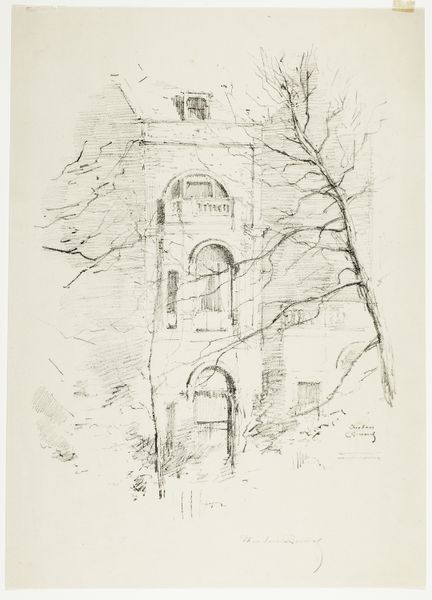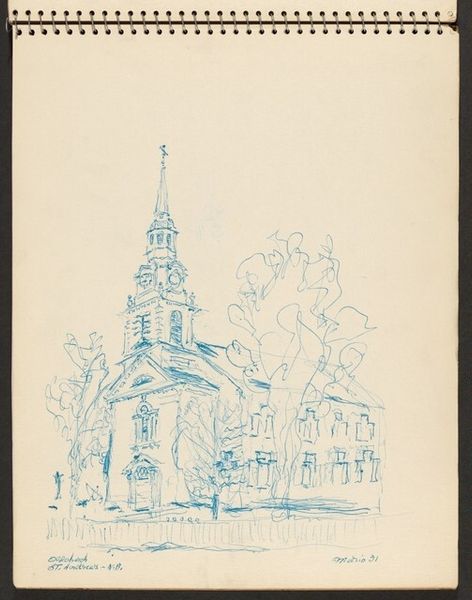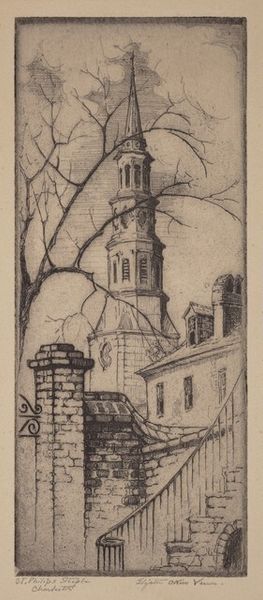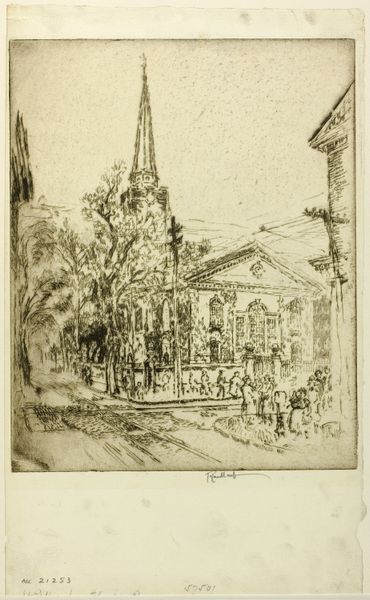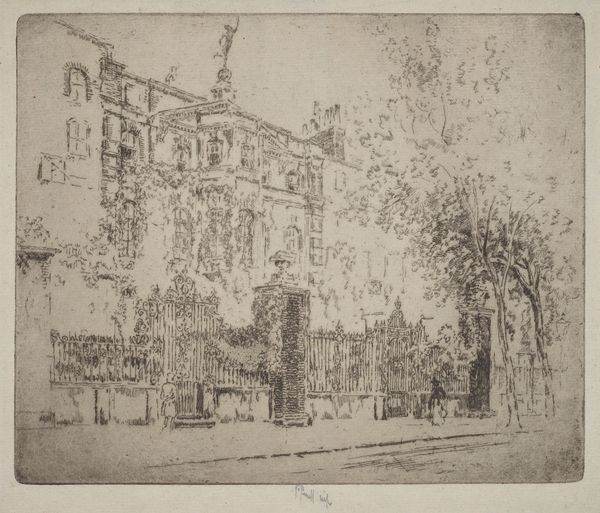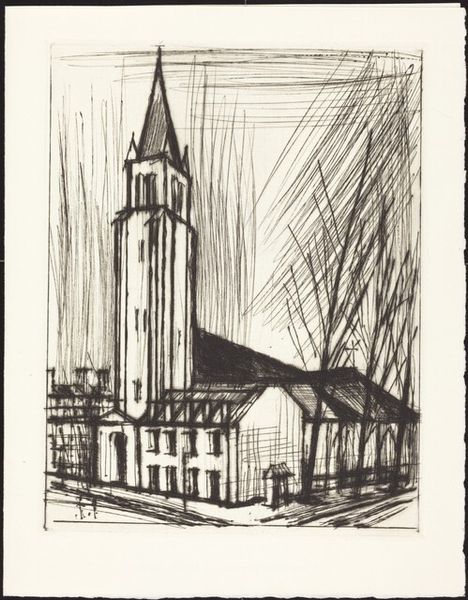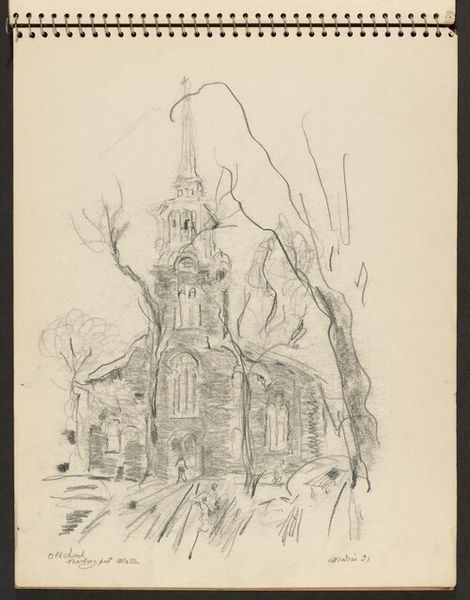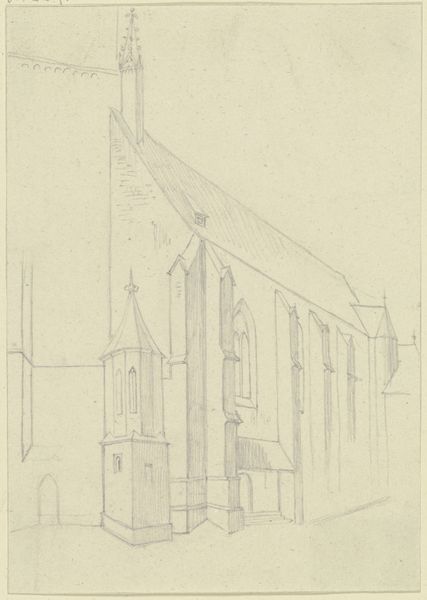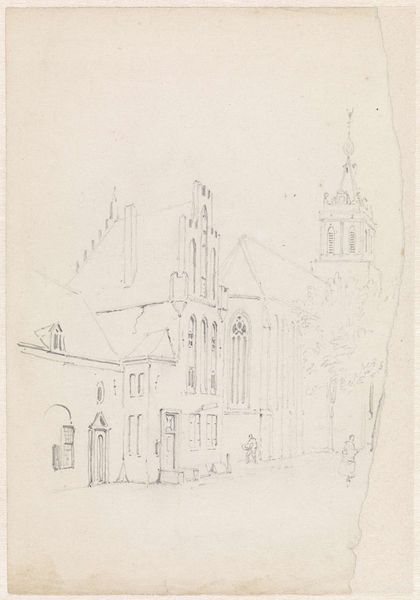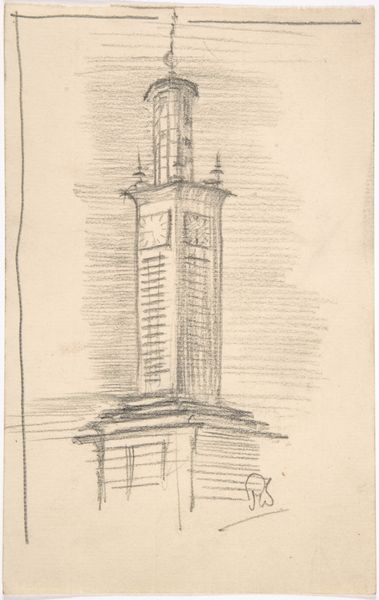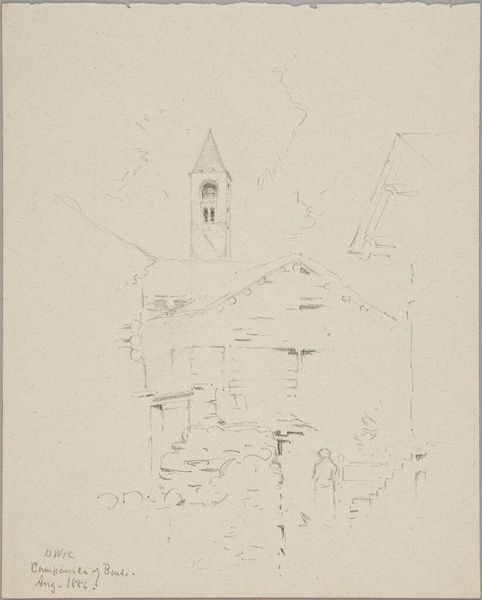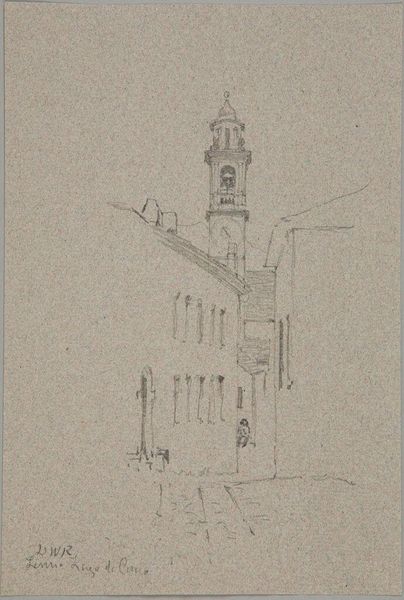
Copyright: Public Domain: Artvee
Editor: Here we have James McNeill Whistler's "St. Giles-in-the-Fields," circa 1896. It's a tempera, etching, and drawing, depicting the church somewhat obscured by bare trees. There's a kind of somberness to the scene, almost like a faded memory. What draws your eye in this piece? Curator: It feels like peering through time itself, doesn't it? I see Whistler playing with the ethereal nature of memory, using the etching to create this hazy, dreamlike quality. Notice how the trees aren't just obstacles but almost seem to cradle the church, giving it an intimate, personal feel. Have you ever felt like a familiar place shifts depending on the light and your mood? Editor: I have, definitely! It's almost like the building has a personality that changes. But why this particular view, do you think? The bare trees especially, why not a brighter scene? Curator: Ah, now you're getting to the heart of it! Whistler wasn't after picturesque perfection. I believe the bareness echoes a sense of transience, perhaps even a melancholy acknowledgement of time’s passage. The scene isn’t about the grandeur of the church itself, but rather about evoking a specific, personal emotion connected to this place. What if it's a feeling, and not a place he's capturing? Editor: That's a beautiful way to look at it. It makes the whole composition feel less like a depiction and more like an emotional snapshot. It’s almost as if you can feel the cold air. Curator: Precisely. It's an atmosphere he's built, layer upon delicate layer. And the remarkable thing is, he achieves such profound emotion with such subtle means. It gives one pause to consider the world, doesn't it? Editor: Absolutely! This piece now feels so much more layered and emotionally complex than I initially perceived. Curator: And that's the magic of art, isn’t it? A conversation that continues long after the artist has left the room.
Comments
No comments
Be the first to comment and join the conversation on the ultimate creative platform.
